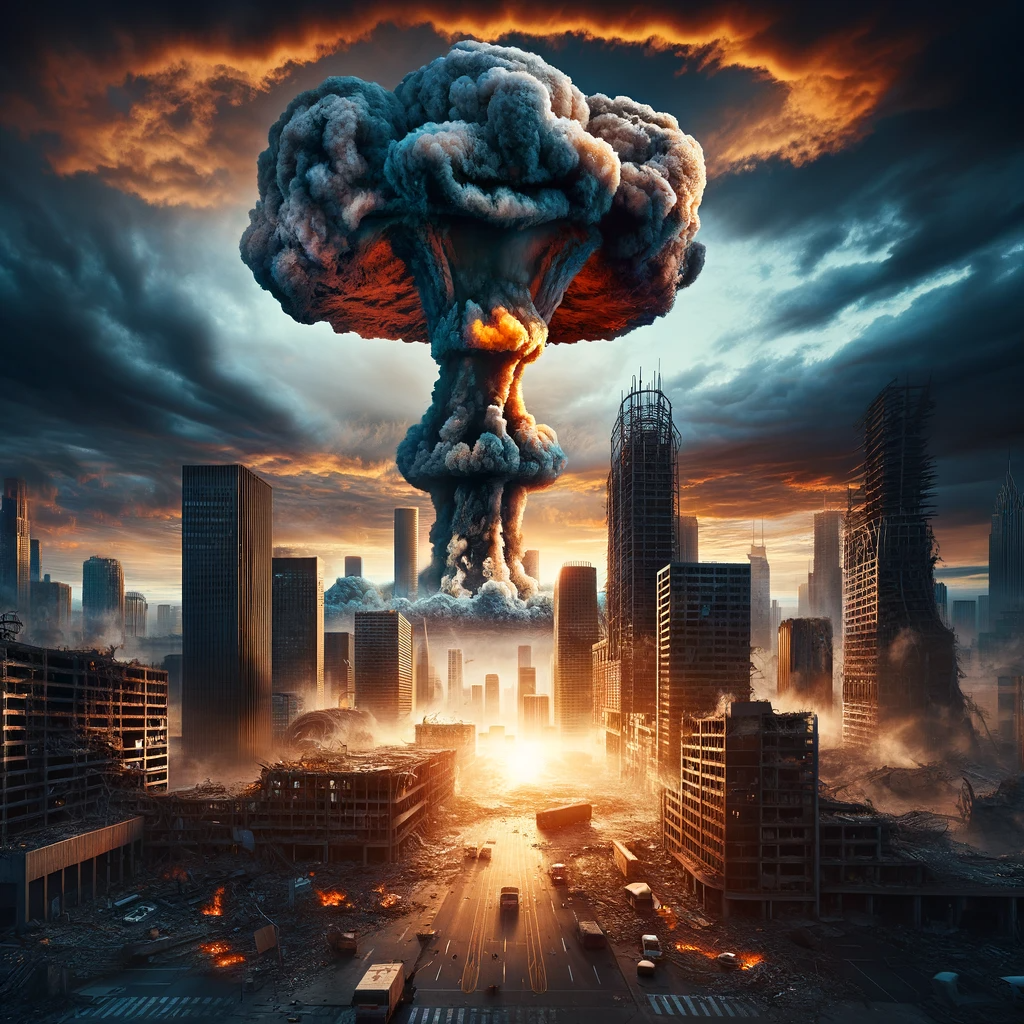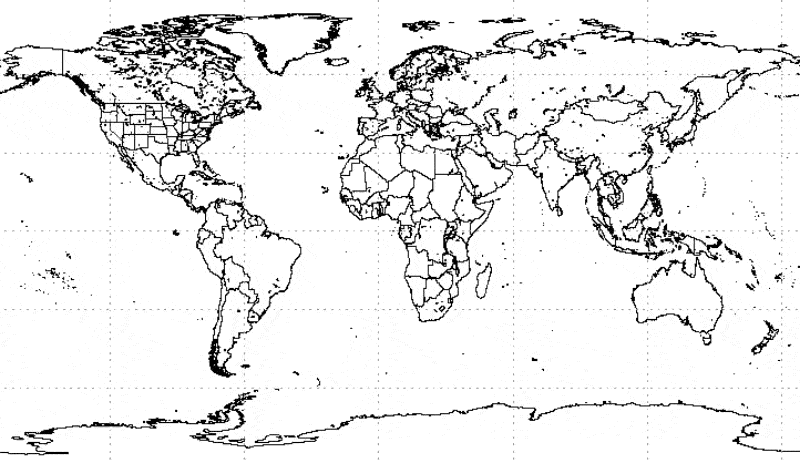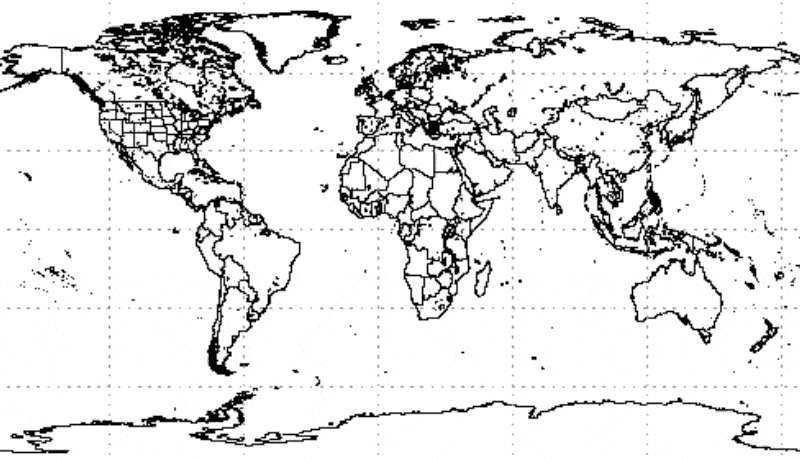Strolling into Nuclear Apocalypse
The unpredictability of human rationality and emotion means the "limited" use of battlefield nukes could easily morph into a full blown nuclear apocalypse.

The nuclear option is back on the table and I'm worried.
Casual remarks by Israeli Heritage Minister, Amihay Eliyahu, about nuking Gaza is just the most recent example of a politician who believes the limited use of nuclear weapons is a viable battlefield tactic. Eliyahu was condemned, but only because he said the quiet part out loud.
An increasing number of bureaucrats around the world share his belief. There is a growing consensus that a using a single low yielding nuke would deter a larger response from other nuclear powers. Unfortunately, these bureaucrats lack the experience and knowledge to know that this strategy was tested - and failed -during the cold war. Simulations made during the cold war demonstrated that any use of nuclear weapons - no matter how small - would rapidly escalate.
Critically, as the old guard of the Cold War dies off, sound strategic foresight is being replaced with political grandstanding.
Ronald Reagan feared the risks and in his 1984 State of the Union address declared, “A nuclear war can never be won, and must never be fought." He knew this because a wargame (Proud Prophet) conducted in 1983 demonstrated that all uses of nuclear weapons - even limited - resulted in complete destruction.
Limited de-escalatory nuclear strikes were the most notable strategic proposal during Proud Prophet. The idea behind this strategy was that if Soviet authorities found that the West was about to go nuclear, they would come to their senses and accept a ceasefire. This was supposed to limit nuclear war. Unfortunately, it did not play out that way. The team representing the Soviet Union interpreted limited nuclear strikes as an attack and threat on their nation, way of life, and honor. This led the team representing the Soviet Union to respond to the United States with an enormous nuclear salvo, which then led the United States to retaliate. The result was nothing less than a catastrophe.
This simulation shocked the Reagan administration into softening its nuclear rhetoric and the concept of mutually assured destruction (MAD) became widely known.
In case you don't know what complete destruction looks like, it's about 5.4 billion dead within two years of a global nuclear war, mostly from starvation. Soot blasted into the stratosphere from a nuclear exchange between Russia and America would block sunlight for decades, causing a nuclear winter that destroys almost all agriculture.
The following is a simulation of the vertically averaged smoke optical depth in the first 54 days after a nuclear war between Russia and the United States. (Alan Robock)

Only the fortunate would die in the blasts. The following chart estimates the proportion of each country's population that would starve to death.

Despite numerous close calls, nuclear weapons were never used during the Cold War. In 1989, the Berlin Wall fell and the Soviet Empire collapsed, introducing a period of peace and stability.
The relative peace and nuclear de-escalation during the decade following the collapse of the Soviet Union came to an end as American hubris in a unipolar world convinced it to abandon treaties crafted during the height of tensions. The 21st century brought a renewed arms race between Russia and America. Arguably, the race began on June 13, 2002, when the US withdrew from ABM (Anti Ballistic Missile) treaty. The next day, Russia responded by declaring it would no longer abide by the START II treaty, which had not entered into force.
The arms race of the new millennium is subtle compared to that of the 20th century. Few pay attention to the technical jargon and geopolitical speak. Media and politicians rarely inform the public. Yet, during the past two decades there has been a significant erosion of stability.
Over the past two decades, treaty after treaty has been systematically dismantled and the risks have grown.
As recently as October 27th, 2023 the Department of Defense announced it is building a modern variant of the B61 nuclear gravity bomb, designated the B61-13. On November 2, 2023 Russia announced its withdrawal from the Comprehensive Nuclear Test Ban Treaty.
Today the Doomsday Clock sits at 90 seconds to midnight, and with conflict in Ukraine and the Middle East the likelihood a tactical nuke is used rises each day. Modern political dogma that a nuclear exchange can be contained increases the probability a battlefield nuke is used.
But as we learned during the Cold War, escalation is likely.
Such is the mentality of war - defense against existential risks has no limits. One violent act is virtually guaranteed to elicit a violent response, if the capability exists, regardless of who's right or wrong. Rarely do cooler heads prevail once rockets start flying. Yet, the "escalate to de-escalate" doctrine of many politicians demonstrates nuclear policy today is being led by fear, ignorance and overconfidence.
Even if a limited nuclear exchange were to occur - perhaps between two smaller nuclear powers - it's important to emphasize the results would still be devastating. For example, research by Richard Wolfson and Ferenc Dalnoki-Veress suggests "a nuclear exchange between India and Pakistan, involving 100 Hiroshima-sized weapons, would shorten growing seasons and threaten annual monsoon rains, jeopardizing the food supply of a billion people."
The following is a simulation of the vertically averaged smoke optical depth in the first 54 days after a nuclear war between India and Pakistan. (Robock et al., Atmos. Chem. Phys., 7, 2003–2012, 2007)

However, this same research cites the Proud Prophet wargame clarifying "there is every reason to believe that a limited nuclear war wouldn’t remain limited."
War is fraught with uncertainty and in the fog of war bad decisions are made.
Hitler invaded Poland believing Britain and France would remain neutral. Putin thought the invasion of Ukraine would take 10 days. Many predicted World War 1 would only last months.
The unpredictability of human rationality and emotion means the "limited" use of battlefield nukes could easily morph into a full blown nuclear apocalypse.
In 1984 a movie called "Threads" was played in Britain about a small tactical nuclear exchange that escalated into full blown nuclear war.
I highly recommend watching and have posted it below. It starts off slow, but is one of the gut-wrenching movies I've ever seen.
This should be required viewing for every politician and military general on the planet.




